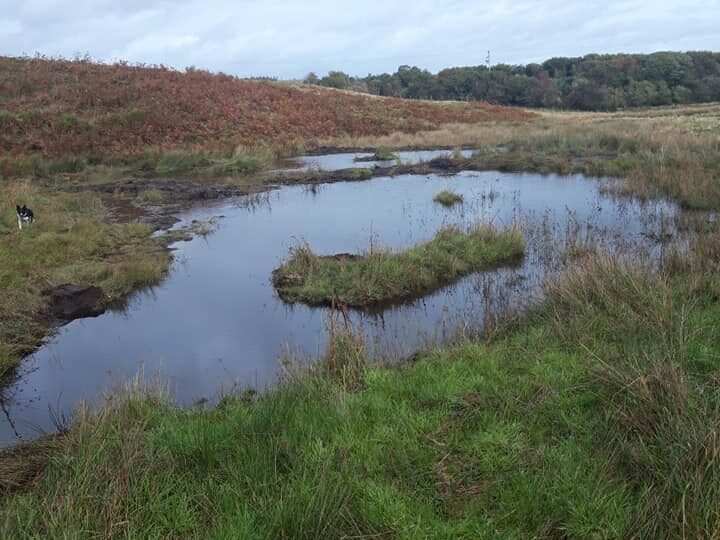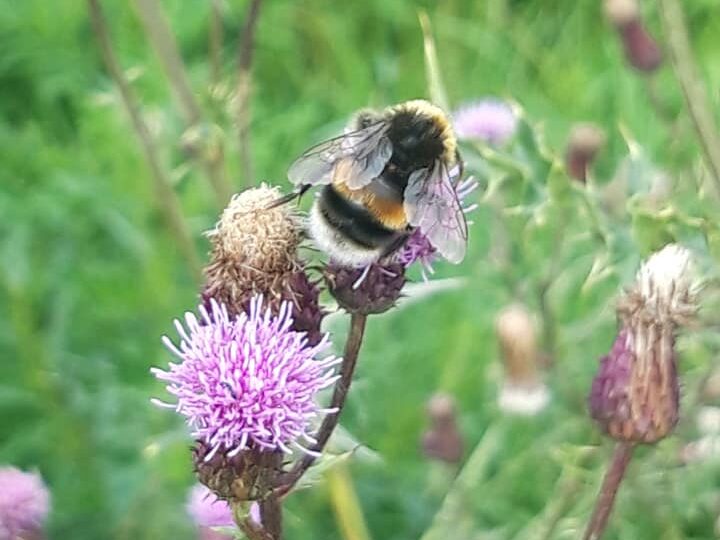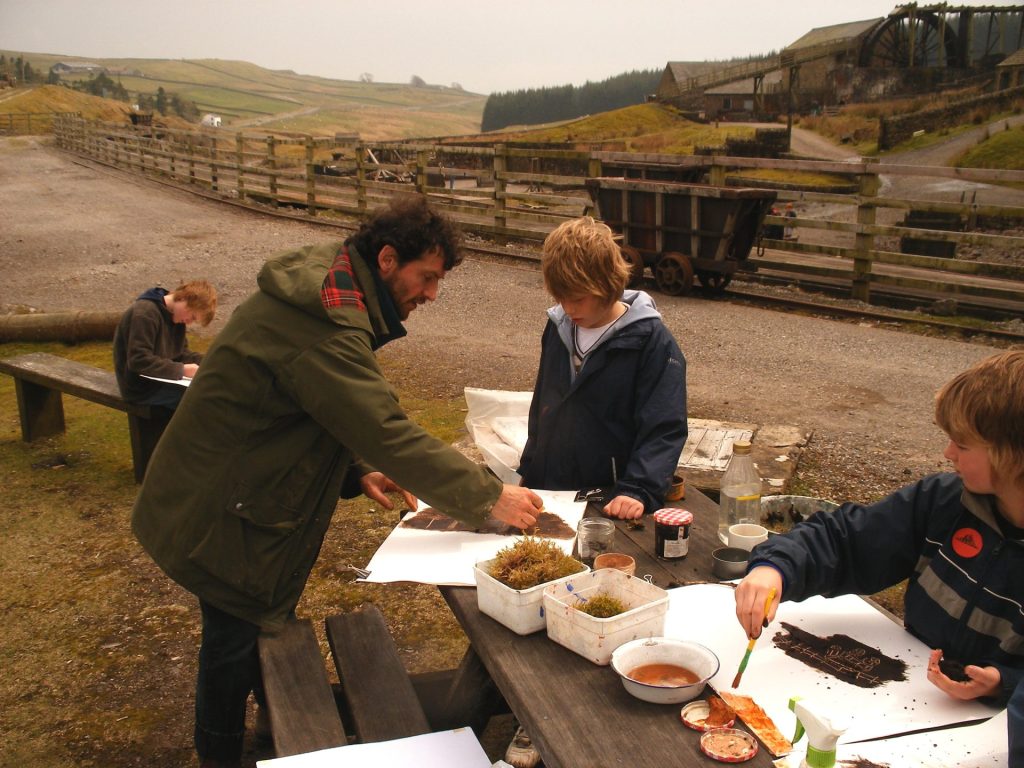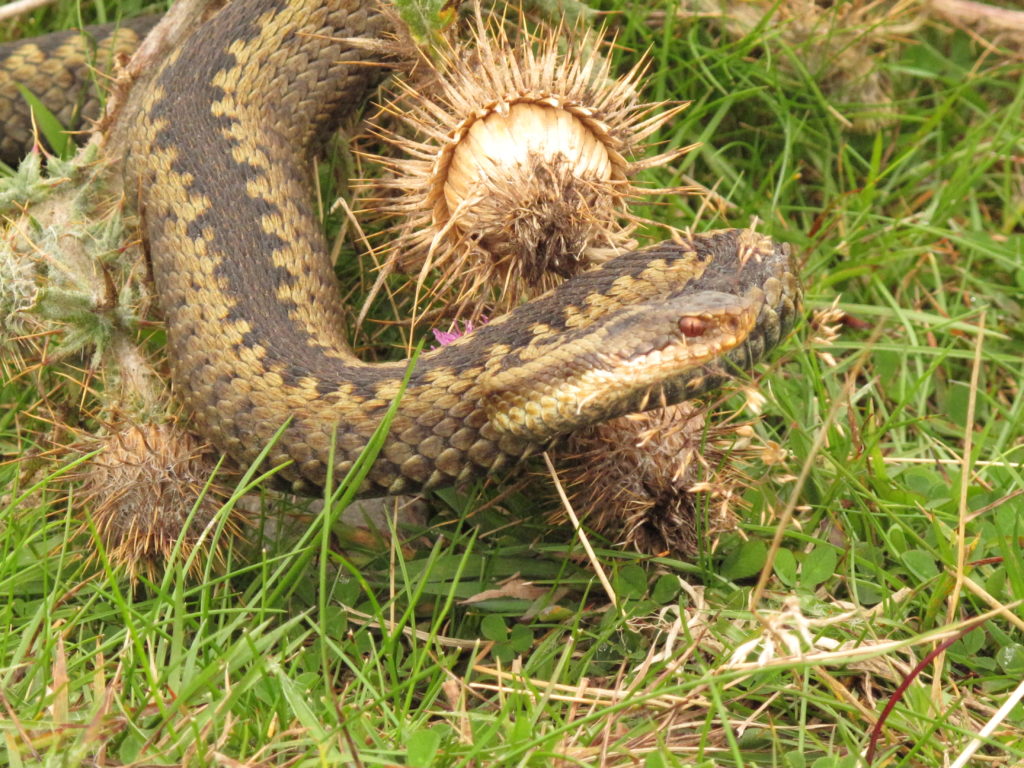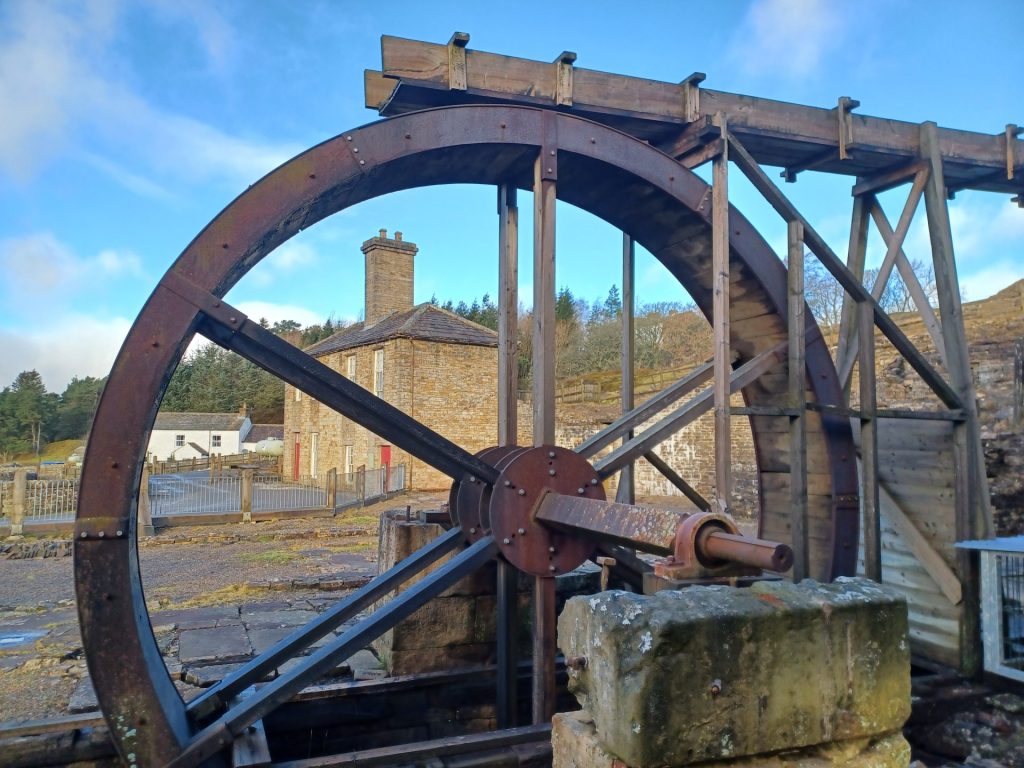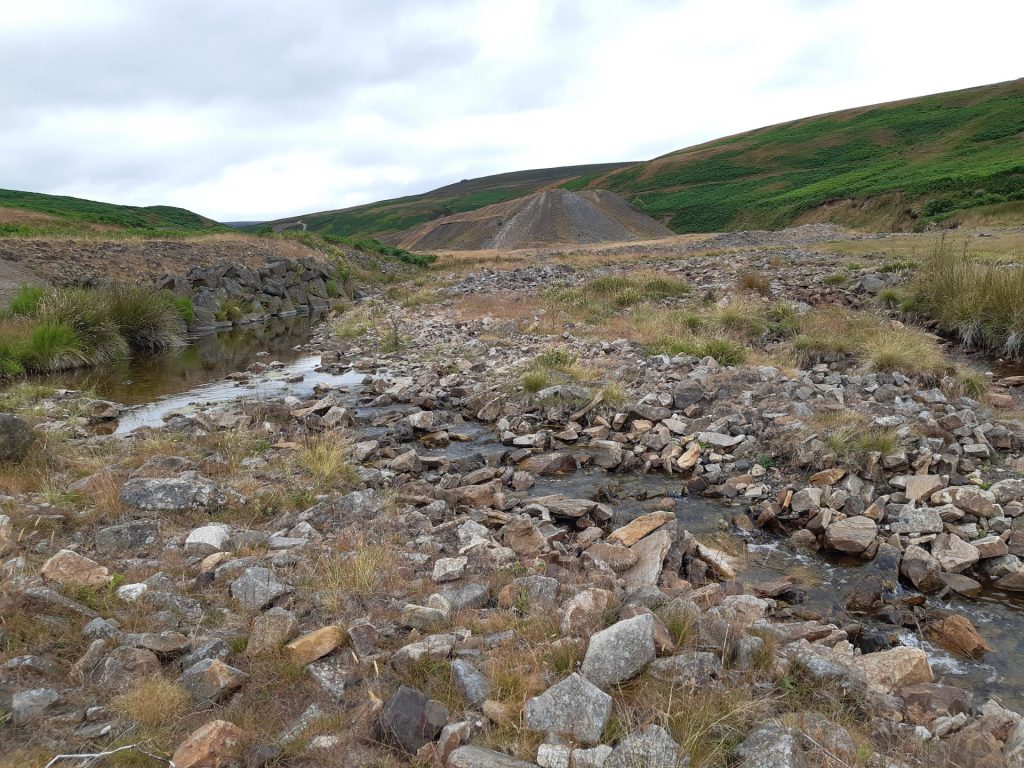Fellfoot Forward Landscape Partnership Scheme
Future Fair case study – Hallbankgate and Tarnhouse farms
Future Fair project manager, Roe Baker, talks to farmers Ian Bell and Rebecca Dickens about their passion for increasing biodiversity and the support they received through the Fellfoot Forward Landscape Partnership Scheme Environmental Grant Fund to plant hedgerows.
The Fellfoot Forward Environment Grant panel awarded Ian and Rebecca a grant to enrich the Fellfoot Forward landscape by creating hedges totalling 540 metres. The benefits, over ten years, will be additional wildlife hedge habitat and shelterbelt for their stock.
Ian and Rebecca farm 7000 acres altogether. Their land is spread over two farms and they are both owners, at Hallbankgate Farm, and tenants at Tarnhouse Farm, farmland rented from the RSPB reserve at Geltsdale.
The Bells have been farming here for three generations since the 1950s. They farm a mix of upland and lowland, sheep and cattle. In the uplands, Scotch Blackface, Cheviots, and Herdwicks roam and in the lowlands, they keep Texel x and Mule sheep.
Cattle on the upland fells are native cross cows, predominantly Luings with some Highland x Shorthorn and Belted Galloways, all crossed to Charolais bulls to produce quality store cattle with some finished on the farm. The lowland farm runs a small herd of pedigree cattle, ‘Hallbankgate Charolais’, producing young bulls to sell for breeding.
Both herds wherever possible breed their own replacements, with only stock bulls being brought in for the pedigree herd. The herds are both in the SAC High Health Scheme. Ian says that by breeding their own stock, they are assuring the health of their cattle and, for the hill cattle, the calves learn inherently from their mothers – they know their way around the farm and are at home in the landscape.
Ian and Rebecca’s key focus is to maximise the potential they have to produce quality sustainable food in balance with nature. They are a great example that even in the challenging uplands of the North Pennines, you can run a viable business, which employs two farm workers, alongside protecting and enhancing the land for nature recovery, habitat creation, and biodiversity.
Rebecca keeps detailed records of wildflowers on the farm, going on regular flower hunts while out caring for their stock. She records dates, colour, any changes in typical flowering, habitat, species, petal formations and rarity. Her visual record, including some wonderful galleries on Facebook, are an absolute joy to look at and a record where she can track changes over time.
One of the farm’s fields was surveyed by Linda Robinson. Born and raised in Melmerby, Linda worked for the Nature Conservation Council at Moor House National Nature Reserve Field Station, helping to designate potential SSSI’s in northern England, and now volunteers with the Botanical Society of Britain and Ireland. In the space of one hour in the rain, she noted 80 species on just one small bank alone. The same field has over 125 species recorded by the RSPB.
Rebecca and Ian protect the landscape for diverse flora and fauna by managing the soil health on the farm with a minimum use of fertiliser and by creating natural habitats alongside their commercial stock pastures.
Ian has a passion is for creating wetlands rich in invertebrates and birds. Utilising land which is too wet to graze commercially but where water is naturally held by heavy clay soil, he creates astonishingly beautiful spaces. These scrapes and ponds work on two levels, they allow the stock to graze right up to the edge of the ponds and gain access to clean drinking water, while providing an ideal habitat for wading birds, wild fowl and a huge array of insects, especially dragonflies.
The rich meadows full of birdsfoot trefoil, varieties of vetch, clovers, ragged robin, scabious, and orchids are a mecca for butterflies, moths, bees, and beetles. Ian and Rebecca are replacing the need for artificial fertilisers with mixed herbal leys, plants that put down a deeper root system, improve soil structure and texture, act as nitrogen fixers, and benefit their stock too.
Herbal leys are becoming more and more popular and can be very cost effective. Providing mixed herbs improves the availability of key nutrients straight from the pasture and, once established, can reduce the need for supplementary feeding of vitamins and minerals. Herbal leys are great for soil health, cost effective, reduce the need for artificial fertilisers, in turn reducing nitrous oxide emissions and supporting carbon sequestration.
Roe asked Rebecca about the use of plants on the farm for animal health. Rebecca replied: “I let the sheep graze on willow – they self-medicate, and it seems to support them when they’re feeling ill. Also ivy is a good tonic, stimulating appetite. Additionally, both willow and ivy are fantastic for bees and butterflies, providing early and late nectar sources, so we don’t cut ivy back and always keep a patch of it near the farm for additional medicinal use”.
Rather than clearing areas of old woodland, Ian protects and encourages wet woodland as a rich and diverse habitat for invertebrates and birds, supporting a very large number of species, some of which are now rare in Britain. There have been considerable losses of wet woodland habitats in Britain in the last century, mainly due to clearance, conversion to other agricultural land use, or the lowering of water tables through drainage or abstraction. Letting fallen trees lie and creating a dense shrub layer with alder, birch, and willow creates a fabulous habitat for vast numbers of small bird and mammals, as well as a hunting ground for owls and birds of prey including kestrels.
Ian and Rebecca are mindful of sourcing from local and sustainable suppliers – but this can be complex. They source their hedges locally from Trees Please in Northumberland, saying: “Great Britain is split into several regions of ‘seed provenance’, also known as ‘seed zones’, and Trees Please is situated in Zone 204, which runs from Dunbar down to Middlesbrough. Trees Please collects a large quantity of seeds from sites all over the UK and especially around the 204 and 109 zones. This seed is then processed and treated on site through to sowing in the nursery. Trees Please look at innovative ways to work in an environmentally friendly way and they care passionately about our environment and sustainable farming”.
Ian and Rebecca have chosen a mixed hedge pack for the farm with hawthorn, blackthorn, crab apple, dog rose, guelder rose, field maple, alder, hornbeam, and hazel, which is particularly good for squirrels. They are trying hard to encourage the native red squirrel back to the farm and trapping greys. They have also chosen sessile oak, as it gets its leaves quickly, lasts longer, and is tolerant to heavy clay, and are planting three types of willow – goat, grey, and eared willow, which are medicinal for stock and black grouse like the eared variety which is an early nectar source. Planting intermittent blocks of holly, rowan, spindle, and gorse, as well as the occasional wild sorbus tree, into the hedgerow provides great colour, shelter, pollen, nectar, fruit, and a diverse habitat all year round.
It can be especially tricky sourcing sustainable tree tubes and stakes as there are not many alternatives that are biodegradable, work in practice, and can stand up to the forceful climate in the North Pennines. Jack Ravenscroft and Lizzy Benn, trainees on the Fellfoot Forward scheme, have done some in-depth research into plastic tubes which you can access here.
The Woodland Trust advise using suppliers which offer the UK Sourced and Grown (UKSG) label – a Woodland Trust sponsored project which followed the immediate fall out from the ash dieback issue. Contact the Woodland Trust for a list of registered suppliers.
In considering carbon and sequestration rates of hedges and trees, Peter Leeson of the Woodland Trust says: “Really we want woods or hedges created/planted for the long term. People should be advised that their planting aspirations need to have a forever mindset. The best carbon will be a native tree in the ground forever”.
Ian and Rebecca are busy mapping the ‘nature capital’ of their farm for the Environmental Land Management Scheme (ELM’s), which will replace European Farm subsidies. This is an audit of what is currently on the farm, including soil health, to create a baseline which can then be used to monitor and evidence improvements over time.
Ian and Rebecca have also been awarded a Farming in Protected Landscapes grant (FiPL). This will support them to plant 3.25 kilometres of new hedges, the restoration of 190 metres of hedging by gapping up, the installation of 24 new nest boxes for tree sparrows and a barn owl nest box as well as the creation of three new sand banks for sand martins, and two new scrapes to provide water for wildlife and improve access infrastructure to help walkers and visitors enjoy the area.
Quality is key for Ian and Rebecca on the basis that the better the quality the less is required which makes economic sense as well. They do their utmost to source materials and feed for the farm from sustainable sources and as locally as possible with timber from Laversdale Timber merchants in Carlisle and feed from Dugdale Nutrition in Yorkshire.
Both Ian and Rebecca are keen to use the farm as a community and educational resource and welcome the community in to visit the lambs and study the biodiversity. Ian has done his Care Farmer Training (CEVAS) and they hope to run Open Farm Sundays.
Their future aspirations include: bringing renewable energy to the farm (solar PV could work well on their shed roofs but is currently cost prohibitive); opening a farm shop to supply local, quality, high welfare, sustainable beef and lamb; providing sustainable visitor accommodation for nature lovers; and planting some arable crops including barley for livestock feed and straw.
Ian and Rebecca are open to diversifying, given the uncertainty within British agriculture at present, but farming will always be their ‘love’ and, hopefully, the core of their business.
























